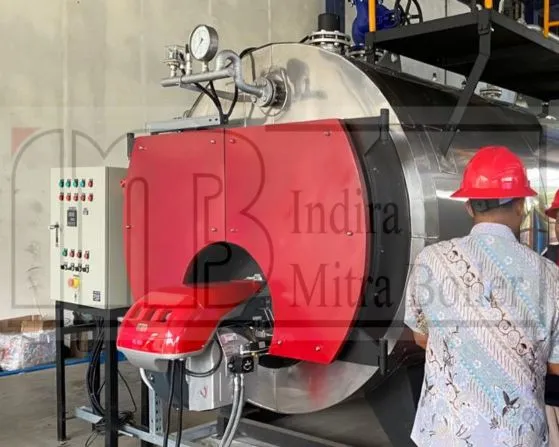BOILER CLASSIFICATION
BOILER CLASSIFICATION
Boilers have evolved in tandem with technological advancements; numerous evaluations have been conducted, spanning from the manufacturing of gas boilers to the production of steam-based products. The following outlines the developed types of boilers:
Based on pipe type:
A. Fire tube Boiler:

The fire tube boiler (Fire Tube) is characterized by its ability to generate low capacity and vapor pressure. The ignition process occurs within the pipe, and the resulting heat is directly delivered to the kettle containing a large volume of air. The kettle's construction utilizes the capacity produced. Fire tube boilers can utilize oil, gas, or solid fuel.
b. Water tube Boiler:
Water tube boilers (Water Tubes) are capable of producing high vapor capacity and pressure. The ignition process takes place outside the boiler pipe, with the heat produced heating a pipe containing air. Before entering the pipe, the air is conditioned through an economizer. The steam is initially produced in a steam-drum and then distributed through the main pipe, passing through secondary and primary superheaters. The air flowing through the air pipe is conditioned, taking into account minerals or other dissolved reserves.
Based on the fuel used:
A. Solid fuel Boiler
Solid fuel boilers use relatively cheaper fuels compared to liquid fuel and electricity. The efficiency of this type is better than electric boilers. The process involves the combustion of solid fuels (coal, bagasse, rejected products, municipal waste, wood) with oxygen and a heat source.
b. Fuel oil Boiler
Liquid fuel boilers (fuel oil) are characterized by the most expensive fuel compared to other boiler types. However, their efficiency is better than solid fuel and electric boilers. The ignition process involves heating the mixture of liquid fuels (diesel, IDO, residue, kerosene) with oxygen and a heat source in the boiler.
c. Gas fuel Boiler
Fuel gas (gas fuel) boilers use the cheapest raw materials among existing boiler types. Their efficiency is superior to other fuel-based boilers. The combustion process involves mixing gas fuel (LNG) with oxygen and a heat source.
d. Electricity Boiler
Electric boilers (electric kettle) utilize relatively cheaper raw materials compared to liquid fuel boilers. However, their efficiency is the lowest among all fuel-based boilers. The power source supplies the heat source to activate this type.
Based on the use of the boiler:
A. Power Boiler
In a power plant, this boiler serves as a steam generator for industrial processes. The steam, produced using a water tube boiler, has a large capacity, enabling it to turn a steam turbine and generate electricity.
b. Industrial Boilers
Industrial boilers are licensed for use as steam or hot air producers for industrial processes and additional heating. The steam produced can be generated using either a water tube or fire tube boiler, with a large capacity and moderate pressure.
c. Commercial Boilers
Commercial boilers serve as steam or hot air producers for heating and support commercial operations. The ignition process involves generating steam.